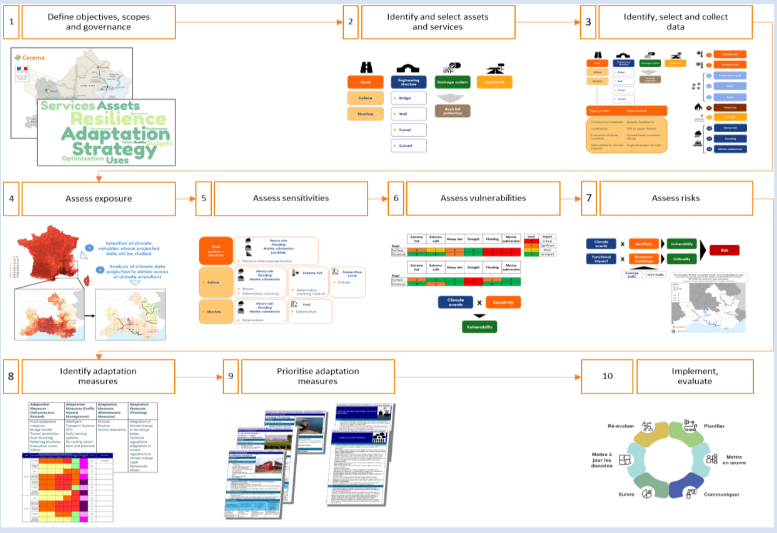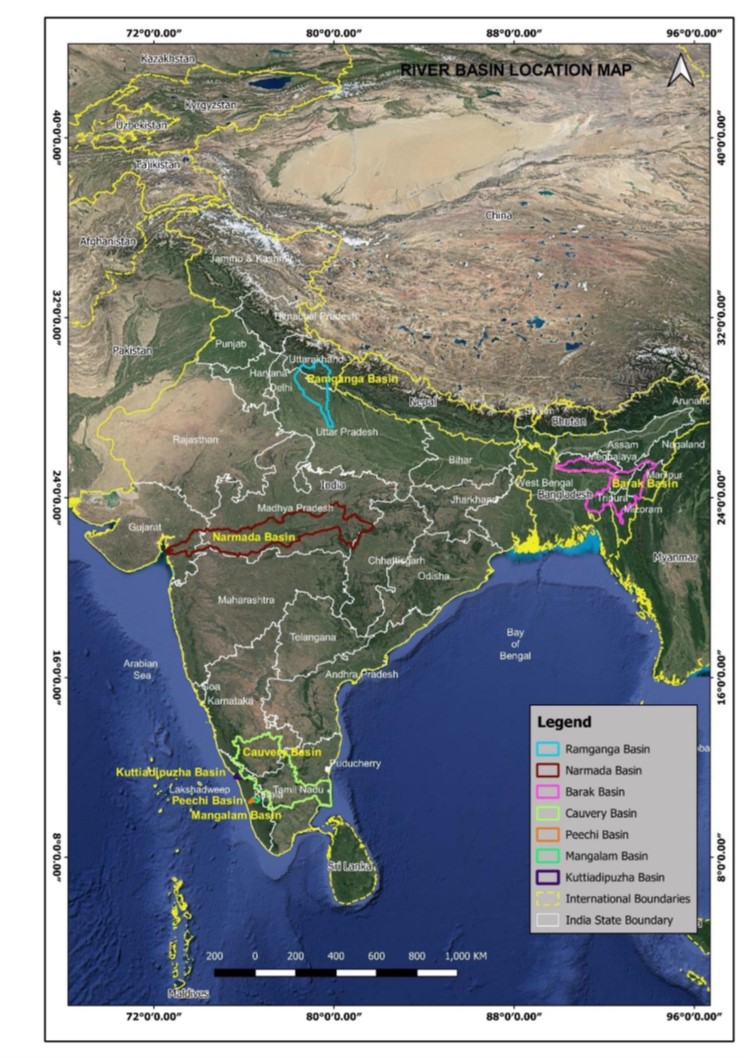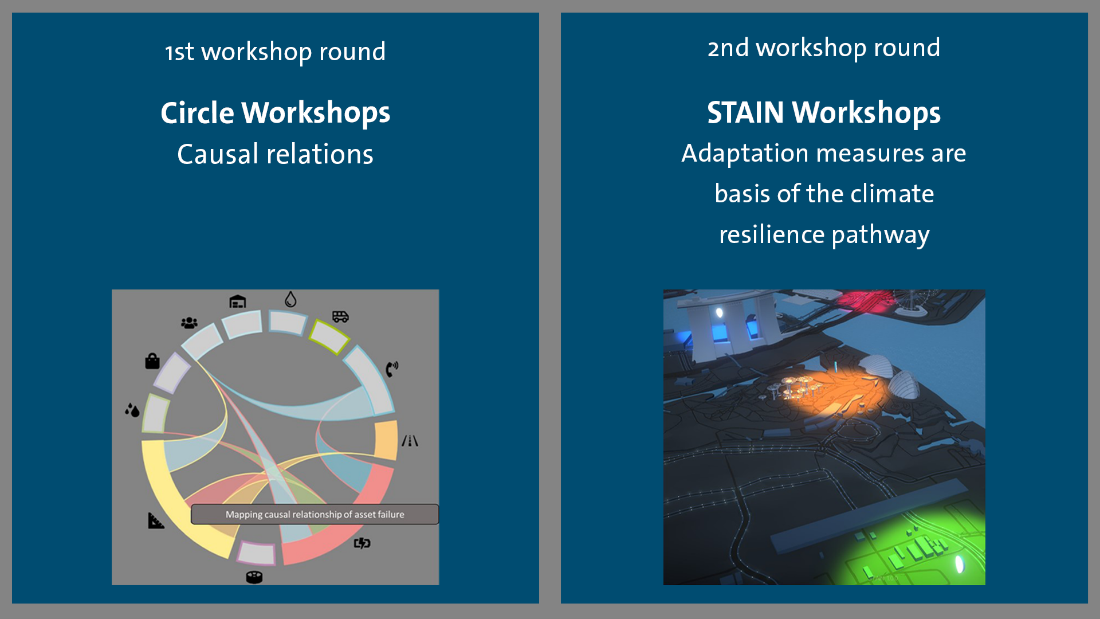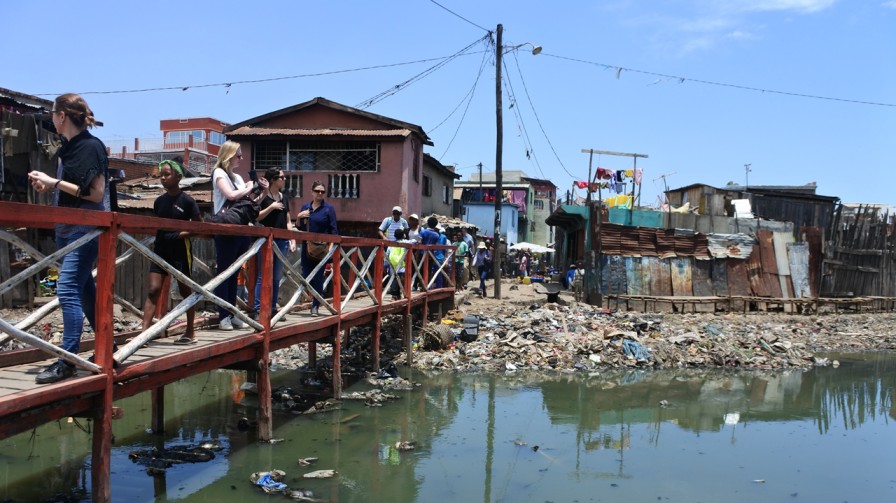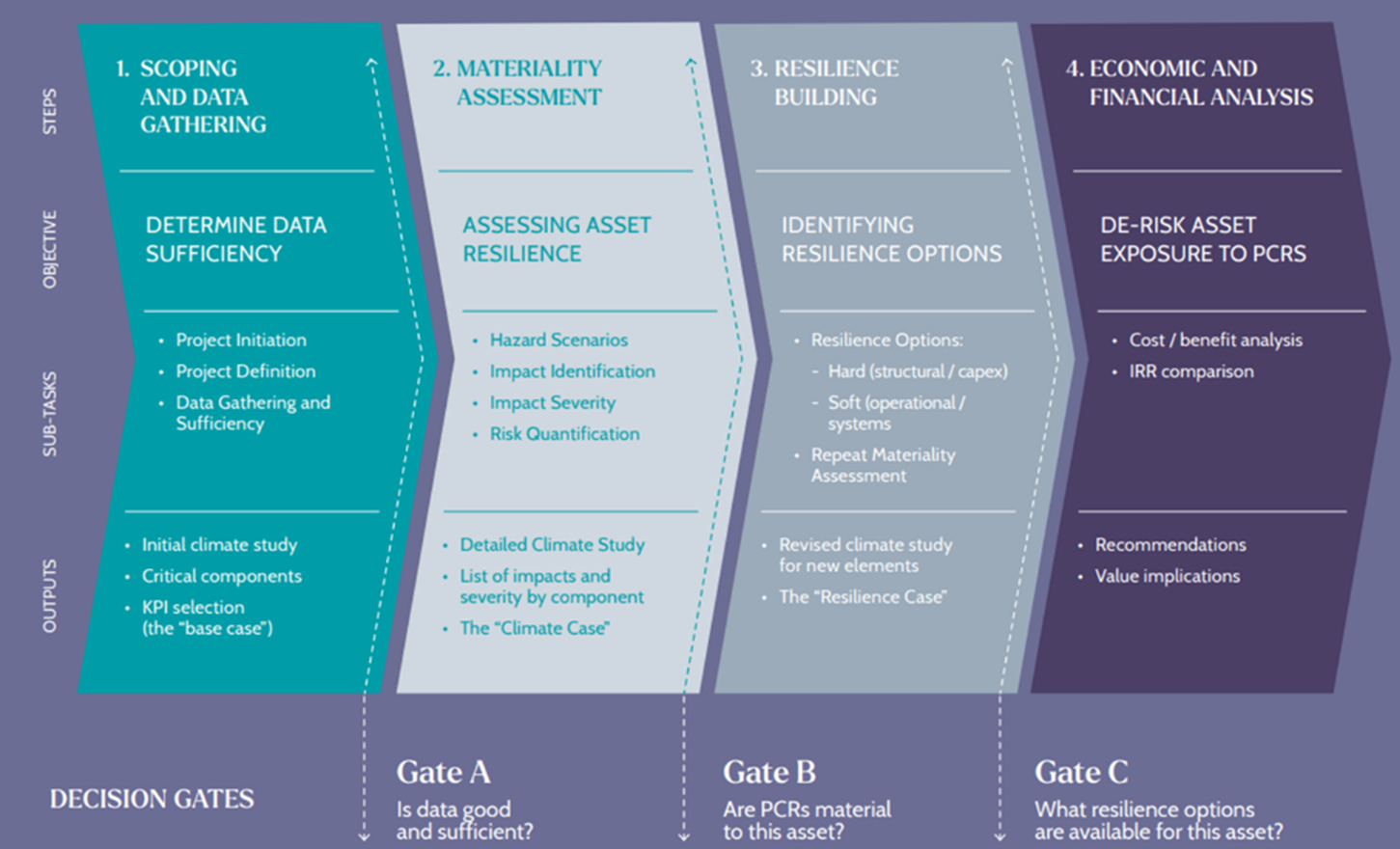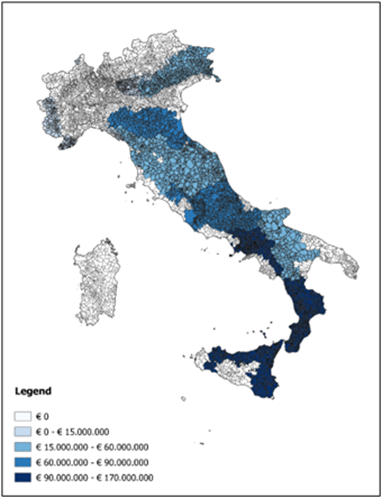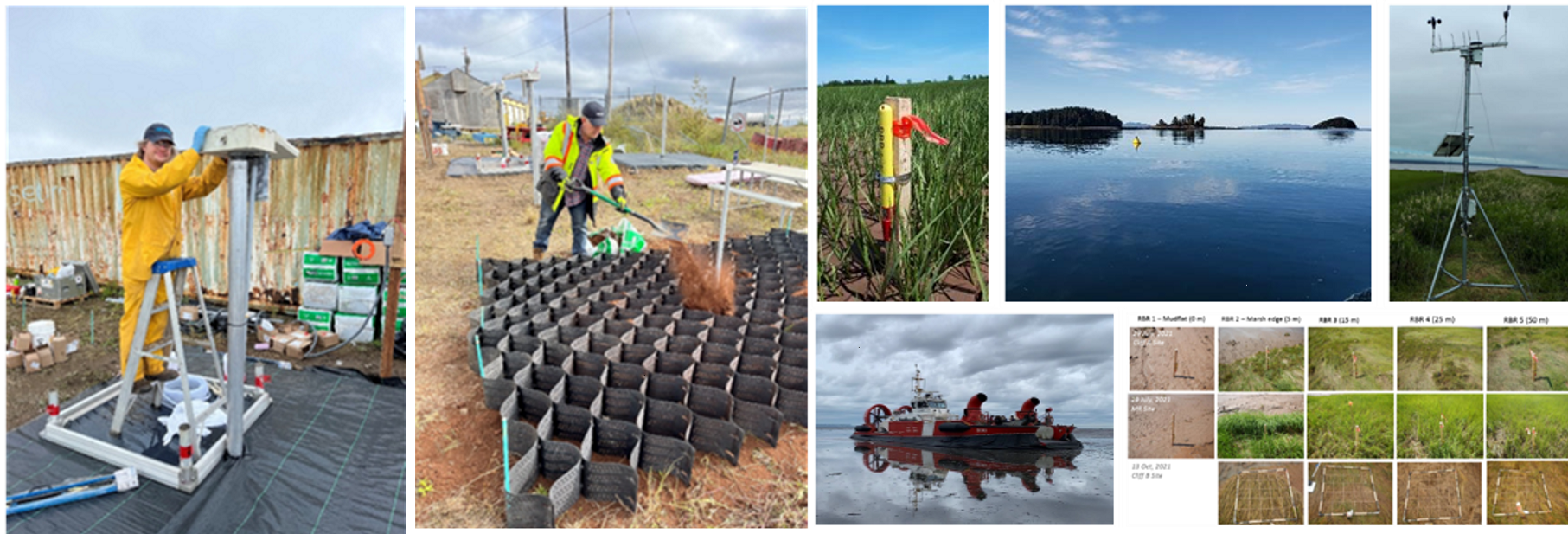The method of building a resilience strategy requires defining its objectives, scope, and governance of the approach. By developing an adaptation strategy, road authorities, asset and network owners can pursue various objectives related to optimising their budgets and investments. This would, in turn, help in network maintenance, ensuring a certain level of service provisioning.
The objectives setting phase guide the overall scope of the analysis, categorised within the following identifiers:
- The climatic scope, i.e., the hazards to be assessed; the horizon(s) and scenario(s) of projection,
- The physical scope, which corresponds to the different infrastructures to be assessed,
- The functional scope, which is the list of services or functionalities (commuting, goods transport, etc.) provided by a network,
- The geographical scope, which depends on the three previously mentioned scopes.
The following are the key steps involved in building a resilient strategy for transport infrastructure:
- Facilitating vulnerability assessment by carefully choosing and categorising the transport assets.
- Identifying and gathering asset data, data related to their functionalities, and climatic data (past, present, and projected). This step is highly dependent on the defined scopes.
- Analyzing the climate projections based on long-term hazard data, such as its severity or frequency.
- Rating the infrastructure sensitivity to hazards. The sensitivity rate may increase depending on the inherent characteristics of infrastructure, such as its age, its level of maintenance, its construction material, and the standards used for its design or construction.
- Assessing the physical vulnerability of networks, systems and components by cross-examining the sensitivity of the infrastructure due to its exposure to climate hazards.
- Defining and rating the functional vulnerability of the network due to hazards, which corresponds to the level of impact on their functionalities such as a disaster-affected road, would be inoperable for one or more hour(s), ultimately leading to traffic slowdown.
- Assessing risks requires defining the services provided by a transport network to a territory or the territory's expectations from the network. The risk analysis consists of identifying the impact of climate hazards on these services or expectations. This step is different from the functional vulnerability assessment, which does not consider the issues related to serving the territory.
- Identifying adaptation measures for assets at risk. Adaptation options may relate to the exposure of assets, their sensitivity, vulnerabilities or risk. Various adaptation solutions exist related to the design, construction, maintenance, exploitation, and planning of infrastructures leading to hazard mitigation.
- Defining a resilience strategy by prioritising the previously identified adaptation options. This is aligned to meet the objectives defined in the first step, and it will generally include recommendations on the adaptation measures to be adopted. It is designed to be embedded in the relevant decision-making processes.
- Implementing the resilience strategy and creating mechanisms for its regular monitoring.








